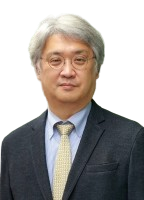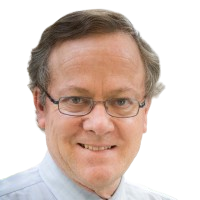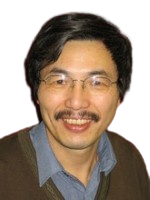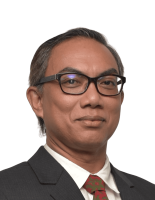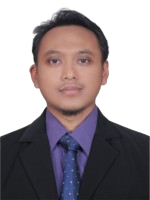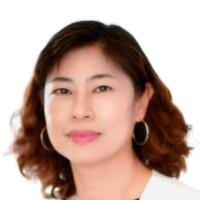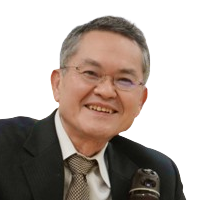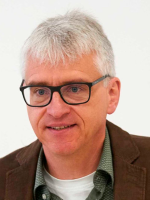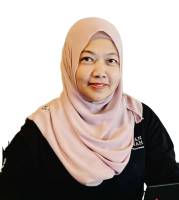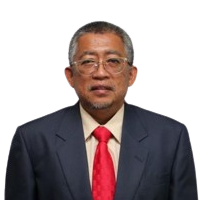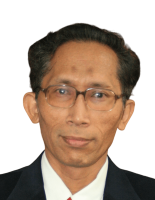Speakers
Speakers
Manuel Cruz
Instituto Superior de Engenharia do Porto, Portugal/EU-Maths-IN
From Theory to Technology: EU-MATHS-IN’s Impact on Industrial Mathematics
Abstract
Industrial mathematics is a source of innovation and competitiveness, bridging the gap between theoretical advances and practical applications. The EU-MATHS-IN network (European Service Network of Mathematics for Industry and Innovation), promoted in 2013 by the European Consortium for Mathematics in Industry and the European Mathematical Society, has the main objective of fostering collaborations between academics and industrialists, highlighting the strategic importance of mathematics for technology and business development.
This talk will give an overview of EU-MATHS-IN and will also focus on the structure of OpenDesk. This platform, built by EU-MATHS-IN to promote technology transfer, allows any company, regardless of its size, to access innovative mathematical solutions. This portal intents to facilitate the dialogue and direct collaboration between mathematicians and entrepreneurs, resulting in concrete technological advances adapted to market needs. This will be illustrated with some examples of success stories between mathematics and industry.
Kenji Kajiwara
Kyushu University, Japan
Generating Aesthetic Shapes by Integrable Differential Geometry
Abstract
In this talk, we consider a class of plane curves called log-aesthetic curves (LAC) and their generalizations which have been developed in industrial design as the curves obtained by extracting the common properties among thousands of curves that car designers regard as aesthetic. We consider these curves in the framework of similarity geometry and characterize them as invariant curves under the integrable deformation of plane curves governed by the Burgers equation. We propose a variational principle for these curves, leading to the stationary Burgers equation as the Euler-Lagrange equation.
We then extend the LAC to space curves by considering the integrable deformation of space curves under similarity geometry. The deformation is governed by the coupled system of the modified KdV equation satisfied by the similarity torsion and a linear equation satisfied by the curvature radius. The curves also allow the deformation governed by the coupled system of the sine-Gordon equation and associated linear equation. The space curves corresponding to the travelling wave solutions of those equations would give generalization of LAC to space curves.
We also consider the surface constructed by the family of curves obtained by the integrable deformation of such curves. A special class of surfaces corresponding to the constant similarity torsion yields quadratic surfaces (ellipsoid, one/two-sheeted hyperboloids and paraboloid) and their deformations, which may be regarded as a generalization of LAC to surface.
Philip Broadbridge
La Trobe University, Australia
Exact transient solutions for multidimensional flow in unsaturated soil with plant roots.
Abstract
Richards’ equation for flow in an unsaturated soil is a nonlinear diffusion convection equation. In a cropped field, the web of plant roots leads to an additional nonlinear sink term. Before now, the only known exact solutions assumed a sink function that was proportional to the metric flux potential. This gives the wrong convexity for plant water uptake. Now there is a class of nonlinear reaction-diffusion-convection equations that allows a nonclassical symmetry reduction to a linear system. This requires two differential relations among the soil-water diffusivity, hydraulic conductivity and plant root uptake, each being a function of water content. That leaves one free function and a realistic model that can be solved.
Solutions are shown for crop uptake from periodic irrigation furrows and from a circular sprinkler.
Xuerong Mao
University of Strathclyde, UK
Stochastic Modelling, Big Data and Deep Learning
Abstract
One of the important problems in many branches of science and industry, e.g., pandemic, ecology, biology, engineering, finance, social science, is the specification of the stochastic process governing the behaviour of an underlying quantity. We here use the term underlying quantity to describe any interested object whose value is known at present but is liable to change in the future. In this talk we will explain how the ordinary differential equations (ODEs) are not enough to model the underlying stochastic quantity and why stochastic differential equations (SDEs) appear naturally. Several well-known SDE models will be presented including the Nobel prize winning model in finance, stochastic SIS epidemic model, stochastic Lotka-Volterra model in population dynamics. We will then explain how SDE models differ significantly from ODE models and reveal the crucial role of noise. We will see the use of SDE models depend on the estimation of system parameters. In the case when the model has only a few parameters, we show how they can be estimated by the classical statistical methods, e.g., the least-square one; while when there are lots of parameters, we will show how the deep learning plays its crucial role.
Sharidan Shafie
Universiti Teknologi Malaysia
Unsteady two-phase dusty fluid flow over a cone in a porous Medium
Abstract
Dusty fluid flow is found in many natural flow phenomena, and the dynamic behavior of mixtures between solid particles and the liquid or gas phases is significant in environmental science, agriculture, climate research, and various scientific disciplines. Thus, the unsteady dusty fluid flow over a cone immersed in a porous media with the impacts of a magnetic field, heat generation/absorption, and thermal radiation is addressed in the present study. The Crank-Nicolson approach is applied to solve the developed nonlinear governing equations with the subjected initial and boundary conditions. The analysis through graphs and tables examines the impacts of the fluid-particle interaction under the influence of the considered effects on the dusty fluid flow characteristics. The results indicate that an increase in the fluid-particle interaction parameter enhances the velocity profiles of the particle phase while causing a decline in the fluid phase. For fluid phase, the fluid-particle interaction parameter diminishes the local Nusselt number by 15.8% and the local skin friction by 4.8%. Additionally, the particle phase mass concentration parameter decreases the local Nusselt number by 23% and the local skin friction by 12.3%. Dusty fluid flow is important in industries like petroleum engineering, environmental science, and materials processing. It helps in enhancing oil recovery, understanding contaminant transport in groundwater, and improving filtration systems.
Dedy Prastyo
Institut Teknologi Sepuluh Nopember, Surabaya, Indonesia
Measuring Market Risk Dependence and Financial Linkage Using Financial Econometrics Model and Machine Learning
Abstract
Risk management is a crucial component across all aspects of life, with market risk representing a significant area of focus, especially when utilizing publicly available data for analysis. In some instances, risks are isolated and can be managed individually; however, they are often interdependent, necessitating a comprehensive approach to understanding market risk dependencies. This study predominantly employs the Value-at-Risk (VaR) methodology for assessing individual risks, while Conditional VaR (CoVaR) through Quantile Regression (QR) is used to evaluate the causal relationships between multiple risks. The presence of nonlinear dependencies between risks calls for applying a nonlinear model. To this end, this research incorporates a Quantile Regression Neural Network (QRNN) to investigate potential nonlinear risk interactions among publicly listed companies. Utilizing the Least Absolute Shrinkage and Selection Operator (LASSO) regularization, the QRNN model efficiently identifies relevant risk factors. This process is implemented in two distinct strategies: hybrid and embedded. Moreover, the weighting parameter of LASSO serves as a tool for calculating a Financial Risk Meter (FRM) across various organizations or corporations. By applying these methodologies, the study analyzes market risk interdependencies among the selected Indonesian public companies, identifying a significant increase in systemic risk during the COVID-19 pandemic, underscoring the complex dynamics of market risks in global crises.
Ahmad Razin Zainal Abidin
Universiti Teknologi Malaysia
Advancing Engineering Design and Analysis through NURBS Geometrical Representation and Higher-order Interpolation in CAD-CAE
Abstract
The integration of Non-Uniform Rational B-Splines (NURBS) in computer-aided design (CAD) and computer-aided engineering (CAE) has revolutionized the field of engineering by allowing for precise geometrical representation of complex structures. While most CAD programs use NURBS to accurately represent such complex geometries, numerical analysis methods, particularly the Finite Element Method (FEM), typically approximate the geometry using piecewise linear interpolation functions. This approximation often necessitates dense discretization and significant computational resources, limiting the efficiency and accuracy of FEM. This study discusses the advancement of engineering design and analysis by developing the NURBS-Lagrange Finite Element Method (NLFEM), which combines the accuracy of NURBS geometrical representation with the robustness of higher-order interpolation functions. NLFEM addresses the limitations of traditional FEM by employing NURBS for exact geometry representation and Lagrange polynomials for field variable interpolation, enhancing both accuracy and computational efficiency. The paper focuses on static analysis applications for plane elasticity, Kirchhoff plate, and flat shell elements. The Galerkin method is utilized to derive the weak form of the governing differential equations. Comparative analyses against established numerical solutions and commercial FEM software demonstrate that NLFEM achieves faster convergence and higher accuracy. This study highlights the potential of NLFEM to significantly improve the precision and efficiency of engineering analysis, particularly in complex geometrical designs.
Busayamas Pimpunchat
King Mongkut University, Ladkrabang
Leveraging Talent Mobility Project and Mathematical Model Processes for Practical Solutions in Industry, Business and Community
Abstract
This presentation explores the intersection of talent mobility project and mathematical modeling processes to drive practical solutions in Industry, Business and Community. By integrating talent mobility strategies with systematic mathematical modeling processes, organizations can optimize workforce allocation, enhance risk management, and improve resource utilization. The journey begins with clear problem formulation, followed by meticulous data collection and preprocessing to inform model development. Model selection is guided by the complexities of each industry, with parameter estimation ensuring alignment with real-world dynamics. Validation tests the model’s predictive capabilities against independent datasets or observed outcomes, while sensitivity analysis identifies key factors influencing decision-making. Optimization techniques then enable the identification of optimal solutions, balancing objectives and constraints. Implementation integrates models into decision support systems, facilitating informed talent mobility decisions. Continuous monitoring and feedback ensure models evolve alongside changing conditions and stakeholder needs. By elucidating these processes, this presentation showcases how talent mobility and mathematical modeling synergize to drive innovation, foster workforce agility, and optimize organizational performance in finance, insurance, and water management sectors.
Takashi Suzuki
Osaka University
Computational Biology reveals Dual Signal Pathways inside the Cell
Abstract
Cell is regarded as a fundamental unit of life. There are feedback and cross talk of signaling pathways in side the cell against the change of the environment outside. Dual pathways are widely observed to induce robust homeostasis to the life, which, however, sometimes causes a trigger of malignancy of tumor cells. I picked up two examples from recent study of computational biology; NF-kB and EphA2-EGFR pathways.
Thomas Götz
University of Koblenz / European Consortium for Mathematics in Industry
talk title: ECMI – A Network for the next generation of mathematics & mathematicians
Abstract
ECMI, the European Consortium for Mathematics in Industry, was founded in 1987 as a network of European universities, research institutes and companies to promote industrial mathematics on an international scale. Currently, ECMI represents about 100 universities from all over Europe. This talk will present ECMI’s strategy to address the future challenges of industrial and applied mathematics in both research and education. Besides research-oriented collaboration, the educational programme for the next generation of industrial and applied mathematicians (both at MSc. and PhD-level) is one of the core activities of ECMI. Examples from our modelling weeks, study groups with industry and special interest groups will illustrate this and show possible entry points for cooperation between Europe and Asia.
Sh Norjumiza Sy Agil
Yayasan Hasanah
Zulkifli Mohd Nopiah
Universiti Kebangsaan Malaysia
Zainal Abdul Aziz
Akademi Ilmuan Sains Matematik Malaysia (Malaysian Academy of Mathematical Scientists) / MyHIMS Solutions LLP
ADVANCEMENT OF INDUSTRIAL MATHEMATICS FRAMEWORK IN MALAYSIA
Abstract
The use of a Quadruple Helix (QH) innovation model characterizes the cooperation between the four main clusters i.e., government, industry, academia & civil society. The regional networks involving QH collaboration would effectively facilitate the current situation of regional resources and competences to a desirable future for the region via the depictive Double-Coin of Knowledge-Based Regional Development Sharing. This proposed QH model would expedite and advance our planned national innovative Industrial Mathematics (IM) framework (with regard to an academia-business model) via a synergistic & entrepreneurial partnership between dedicated research centers, national societies (Mathematical Sciences, Statistics & STEM-related) and any entrusted company, e.g., MYHIMS Solutions LLP. This affiliation involves interactions in terms of relation, mobility, transfer and formality, which we believe would generate and accelerate industrial innovations. In Malaysia, such collaborative efforts with industry and external parties in the realm of this IM framework are expected to bring various benefits. These include applications of R & D findings, commercialization & innovations in industry and community at large, opportunities for talent and capacity development in academic circle & government agency, and access to funding from government & industry.
Andri Ashfahani
STMicroelectronics
Harnessing AI and Basic Mathematical Formulas for Semiconductor Manufacturing
Abstract
In the dynamic field of semiconductor manufacturing, Artificial Intelligence (AI) is revolutionizing processes and driving innovation through the application of straightforward yet powerful mathematical concepts. This presentation will delve into how AI, leveraging simple mathematical formulas, is being harnessed to enhance efficiency and accuracy in semiconductor production, generating significant returns on investment. Key highlights include AI-driven computer vision, which utilizes basic algorithms for intelligent image capturing and classification, significantly improving defect detection, reducing misclassification rates, and enhancing product quality. Additionally, advanced big data analytics tools employ fundamental statistical methods to streamline the data analysis process end-to-end, enabling the identification of critical defect patterns and operational hotspots, leading to proactive quality control measures. Smart process control is another focus, introducing a monitoring system that applies simple statistical techniques for real-time anomaly detection, optimizing maintenance schedules and minimizing downtime. Overall, this presentation will provide insights into the transformative impact of AI and applied mathematics on semiconductor manufacturing, highlighting real-world applications and collaborative efforts that drive operational improvements. Attendees will gain a deeper understanding of how straightforward mathematical concepts, when applied effectively, can shape the future of the industry, enhancing both efficiency and quality. Join us to explore the cutting-edge applications of AI in semiconductor manufacturing and discover how these advancements, grounded in simple yet effective mathematical principles, are guiding the industry towards a more innovative and efficient future.


